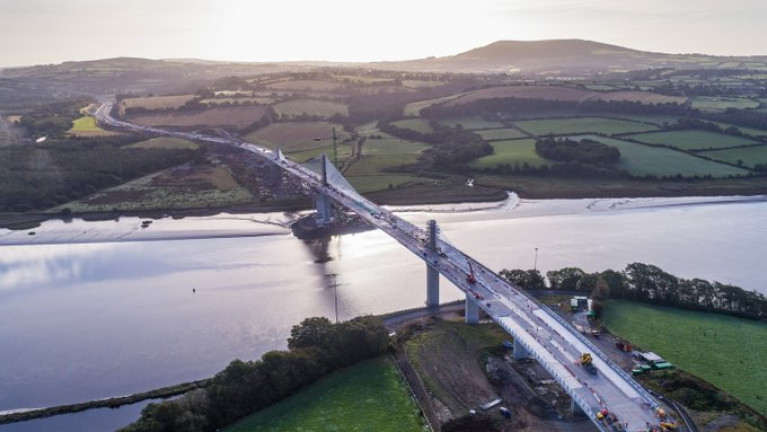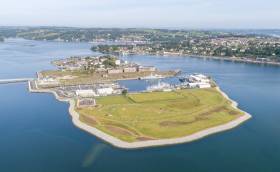Displaying items by tag: Wins Award
Spanning the Barrow (downriver of the Port of New Ross) is the Rose Fitzgerald Kennedy Bridge which has won a prestigious international award for engineering excellence and design of the bridge that opened last year.
As The Irish Times writes, The International Association for Bridge and Structural Engineering said the bridge is “a landmark structure” that has pushed the boundaries for the span of a “concrete extrados bridge”. The association is a scientific and technical group with members in 100 countries, was founded in 1929 and has its seat in Zurich, Switzerland.
The bridge was awarded the Outstanding Structure award in the Bridge or Other Infrastructures category.
It was built as part of the N25 New Ross bypass project and is one of most remarkable bridges in Ireland, rising from the east and turning north, before making landfall on the west of the Barrow.
Most bridges are built along straight lines. But this one contains the longest post-tensioned all-concrete spans in the world. While there are longer spans in bridges, they all take advantage of a lighter steel composite section in the central part of the main span.
Further reading here from the newspaper on the bridge which permits ships to navigate underneath to Ireland's most inland port.
Transformation of Haulbowline Island, Cork Harbour Voted Best National Engineering Project
The East Tip Haulbowline Island Remediation Project in Cork Harbour, was voted the National Engineering Project of the Year for 2019 at a ceremony held in Dublin.
As Afloat previously reported, Engineers Ireland invited members of the public to cast their vote in the shortlist of projects nominated in the awards' flagship category.
According to Engineers Ireland, the project in Cork Harbour was conducted by Cork County Council, RPS, PJ Hegarty & Sons and the Department of Agriculture, Food and the Marine.
The local authority engineering project that transformed the East Tip on the island (opposite Cobh) took the the lead at the 2019 Engineers Ireland Excellence Awards held in association with the ESB.
The remediation project, delivered on time and under budget, has seen 22 acres of the island’s East Tip transformed from a desolate, toxic, industrial site into a magnificent public recreational facility for local residents, workers and visitors in what has been one of the biggest environmental works in the history of the state.
The site at Haulbowline Island in Co Cork, formerly the home of Irish Steel, has been used for waste disposal for decades, with an estimated 650,000 cubic metres of slag and other waste metal from the steelworks deposited on the site from the 1960s until steel making ended at the plant in 2001.
Adopting the most innovative and customised engineering solutions throughout to overcome many challenges, the East Tip now boasts new playing pitches, walkways, cycleways, seating areas and the planting of hundreds of trees, woodlands and wildflower areas.
The Engineering Project of the Year category is sponsored by Transport Infrastructure Ireland and is voted for by a panel of judges and the public.
To read much more on the project click here (scroll down) to sub-heading: 'Immensely Challenging'






























































